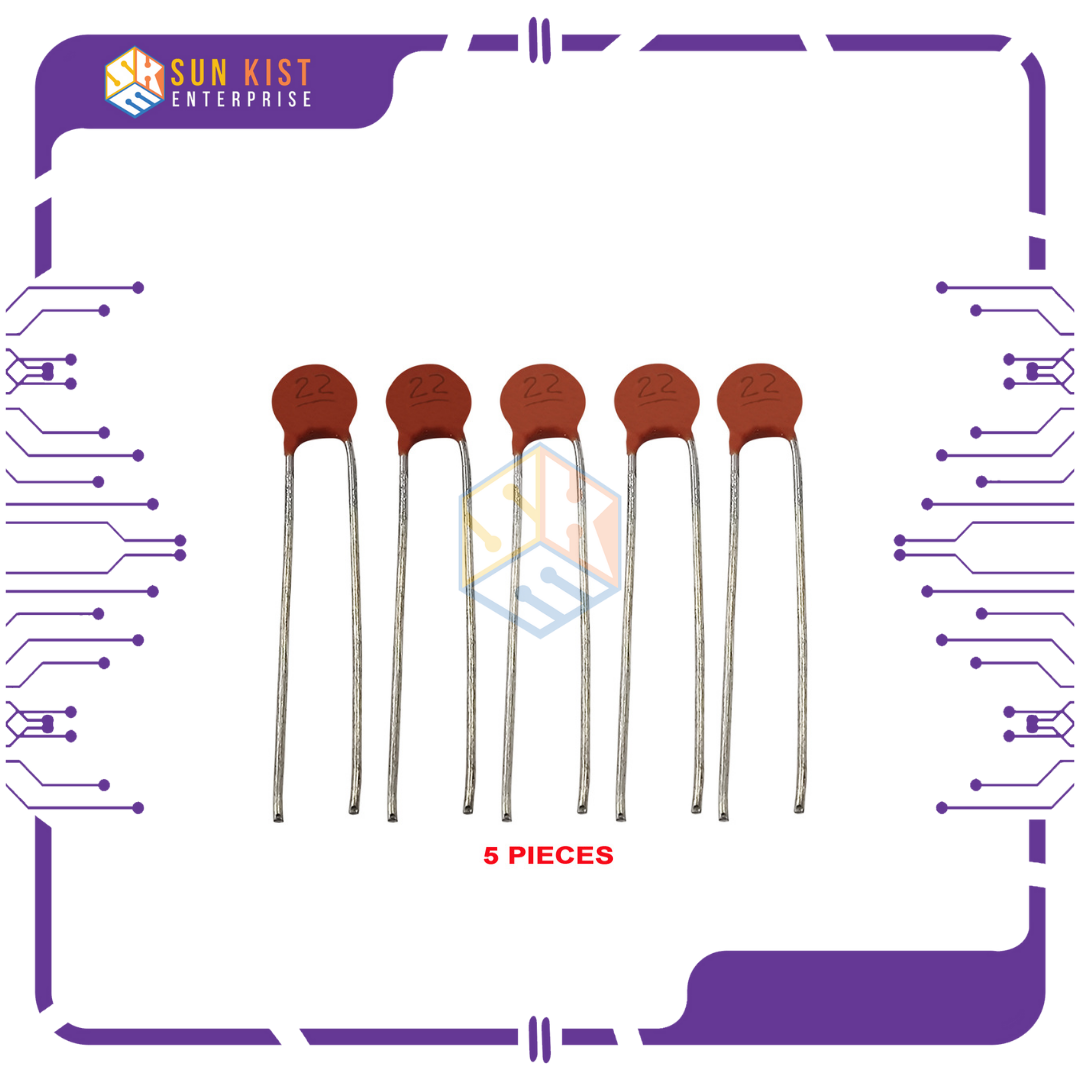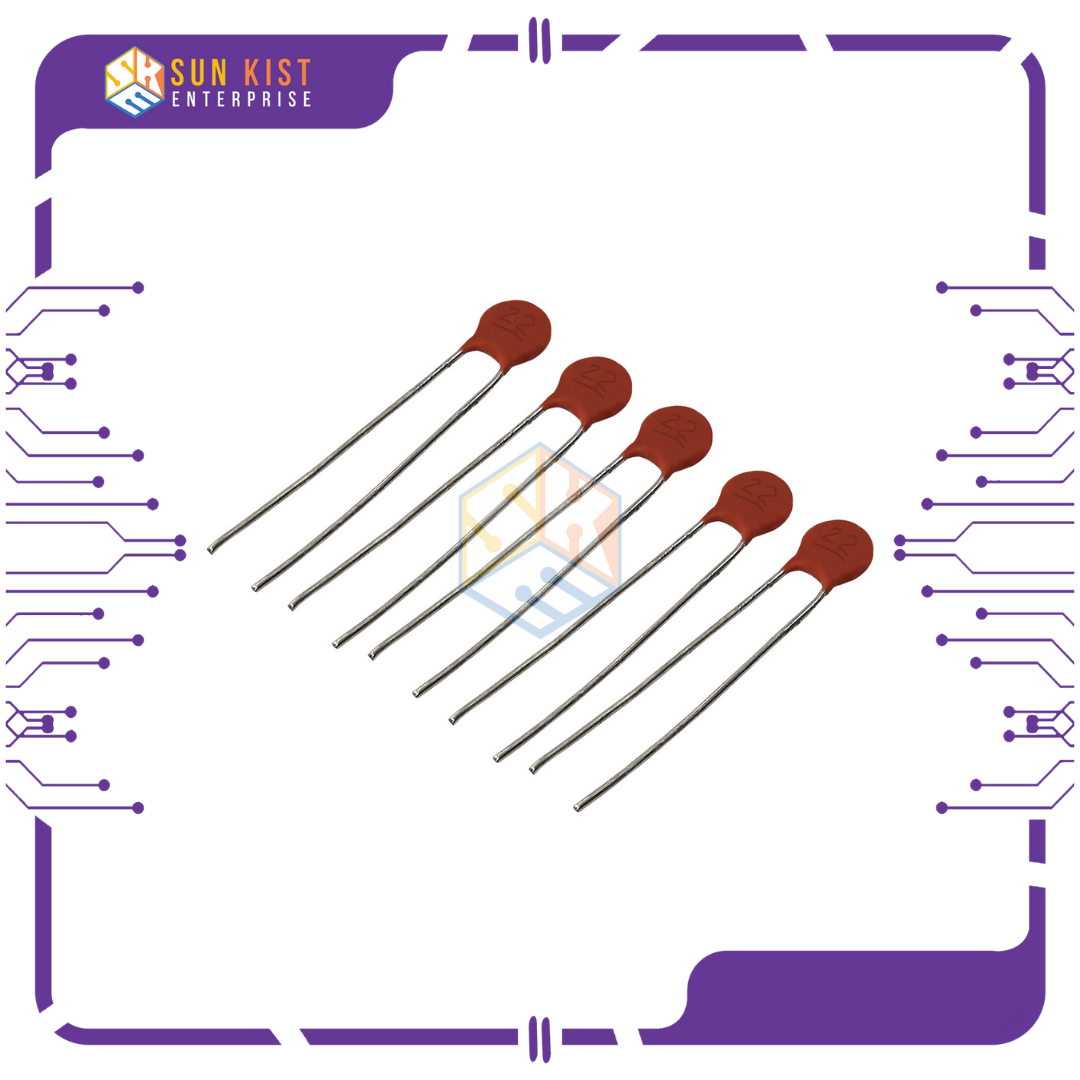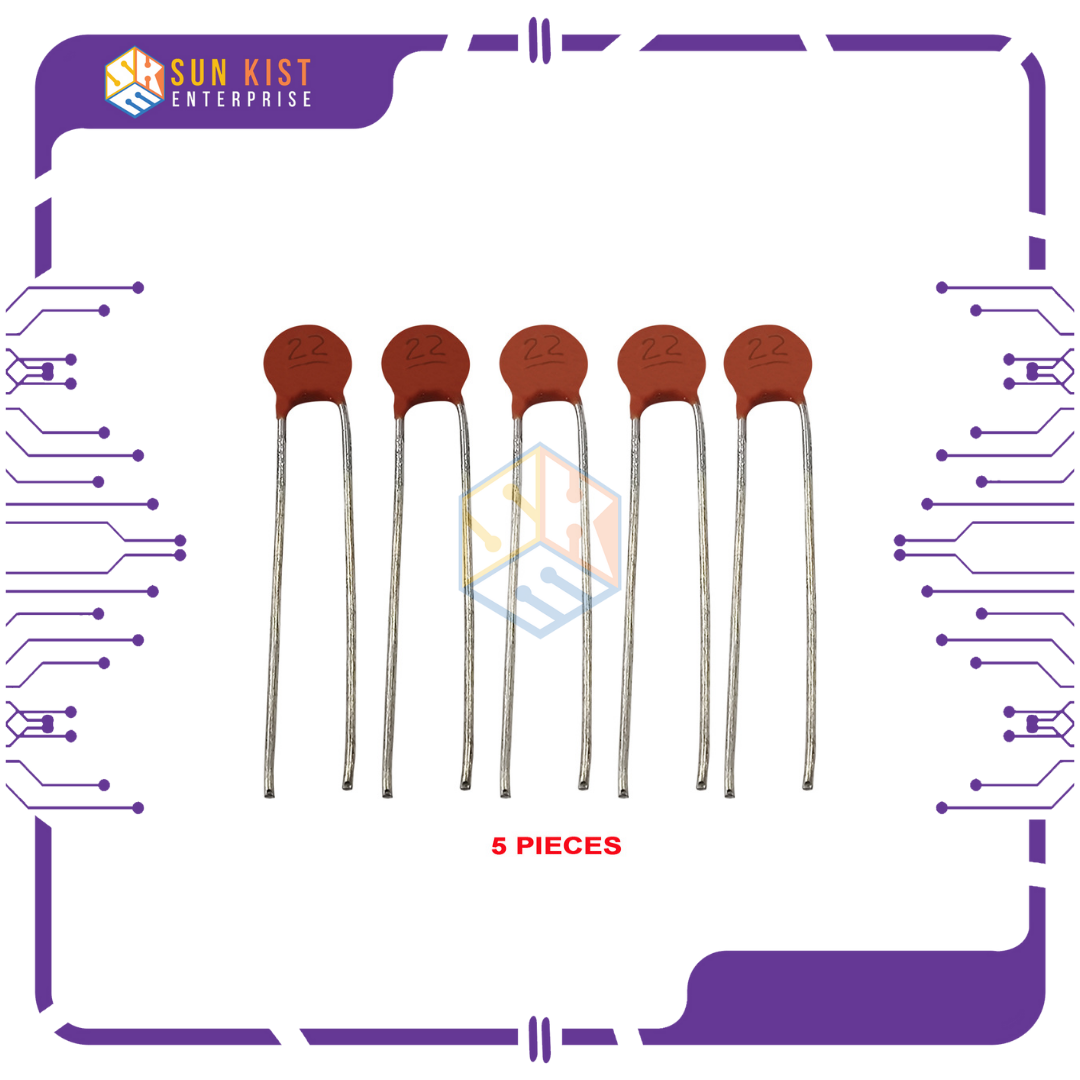Description
A “22pF ceramic capacitor” is an electronic component used to store and release electrical energy. It is a type of capacitor with a capacitance of 22 picofarads (pF).
Here’s a breakdown of this component:
**1. Capacitance:** The value “22pF” indicates the capacitance of the capacitor, which is 22 picofarads. A picofarad is one trillionth (10^-12) of a farad, making it a very small unit of capacitance.
**2. Ceramic Dielectric:** The “ceramic” part of the name refers to the dielectric material used in the capacitor. Ceramic capacitors are common and widely used for their stability, reliability, and low cost.
**3. Small Size:** Ceramic capacitors, including 22pF capacitors, are generally small in size and are often used for high-frequency filtering, decoupling, and bypassing in electronic circuits.
**4. Applications:** These capacitors are commonly used in various electronic applications, such as radio frequency (RF) circuits, oscillators, tuning circuits, filters, and bypassing capacitors in digital circuits.
**5. Frequency Response:** Ceramic capacitors are known for their excellent high-frequency characteristics and are used in applications where rapid changes in voltage or signal are required.
**6. Tolerance:** Capacitors have a tolerance level that indicates how close the actual capacitance value is to the labeled value. Common tolerances for ceramic capacitors include ±10% and ±20%.
**7. Voltage Rating:** Capacitors also have a maximum voltage rating, which specifies the highest voltage they can safely handle without breaking down. The voltage rating for a 22pF capacitor would depend on the specific model but is typically in the range of tens to hundreds of volts.
**8. Non-Polarized:** Ceramic capacitors are non-polarized, meaning they can be connected in any direction in a circuit.
A 22pF ceramic capacitor, with its small capacitance value, is often used in high-frequency and RF applications to provide filtering and tuning. It is essential in circuits where precise control of capacitance and stability are required to ensure proper circuit operation.











Reviews
There are no reviews yet.